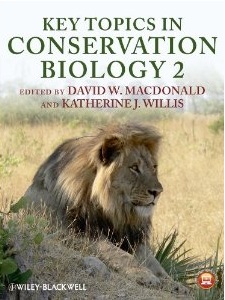
Tackling unsustainable wildlife trade
with Dutton, Gratwicke, Herrera and Macdonald in Macdonald and Willis, Key Topics in Conservation Biology 2, 2013
Humans have bartered wildlife products for goods and services since before currency even existed. Wildlife is used for traditional medicine, wild meat for human consumption, exotic pets, luxury fashion items, trophy hunting and tourist curios. Patterns of consumption vary geographically with human cultural landscapes and patterns of wildlife distribution. The size and scope of wildlife trade networks vary today from hunting and gathering barter systems to massive commercial industries like the commercial fishing industry that captures 75 million tonnes of fish from wild stocks each year (FAO 2010). Illegal wildlife trafficking networks of products like rhino horn, caviar, tiger parts and wild birds is estimated to be worth between US$5 billion and US$20 billion annually (in 2011), ranking alongside illegal drugs and arms trafficking as one of the most lucrative illicit industries (Wyler & Sheikh 2009 ).
It is important to understand how human, governmental and technical limitations and abilities associated with a trade policy can best be ameliorated or employed to protect a wild resource. This chapter describes and illustrates the issues surrounding wildlife trade policies. Wildlife trades are complex and heterogeneous, requiring different management approaches although the issues discussed may be common. It should be possible to develop a suite of investigations based on the issues raised in this chapter to estimate the impacts of each policy on wild populations, each being judged relative to the others. One key message which must be conveyed is that total protection of the wild resource may prove impossible (at least in the short term) under any trade regulation system. We need a quantitative appraisal of impacts so that investigators might be better placed to find what we might call ‘the least leaky bucket’.